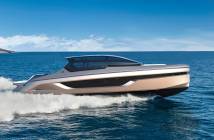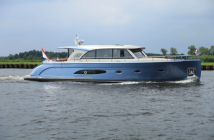Here’s some great advice from Skipper Tips that could help you navigate safely in fog or reduced visibility:
Imagine you’re cruising on a fogbound coast in New England, the Great Lakes or the West Coast. You see a note on your chart that tells you that you can trigger a fog signal on a lighthouse nearby. Follow these three easy steps.
Mariner Radio Activated Sound Signals (MRASS) gives the skipper more control over aids to navigation fog signals. If you see the chart abbreviation MRASS in the description of an aid, you can use your radio to trigger the sound device on that aid.
You’ll find MRASS signals on fog-bound coasts like New England, the Great Lakes, and the US West Coast. So, why has the US Coast Guard decided to install MRASS on some major light structures? Many lighthouses carry old, out-of-date automated fog signals. They cost man-hours and money to maintain.
MRASS saves energy, man-power, and money. Instead of the signal sounding continuously, MRASS equipped aids only sound the signal “on demand” (more on this below). Check the weekly Local Notice to Mariners to find out which aids are “MRASS equipped” in your cruising area. Use this link.
Follow these three steps to activate an MRASS equipped aid-to-navigation:
— Set your VHF Channel to 81A or 83A (check the chart or LNM).
— Key your VHF microphone five times in a row.
— Listen for the signal. It will sound for about thirty minutes.
In the illustration, note the light on the end of the Santa Monica Bay Jetty has a HORN sound signal. You see the abbreviation MRASS enclosed in parentheses. The light description directs us to “see note E”.
Note E tells us to set the radio to channel 81A and key the mic five times to activate the HORN signal. This HORN will operate for thirty minutes, which should give us enough time to verify our position.
Read more at http://skippertips.com




